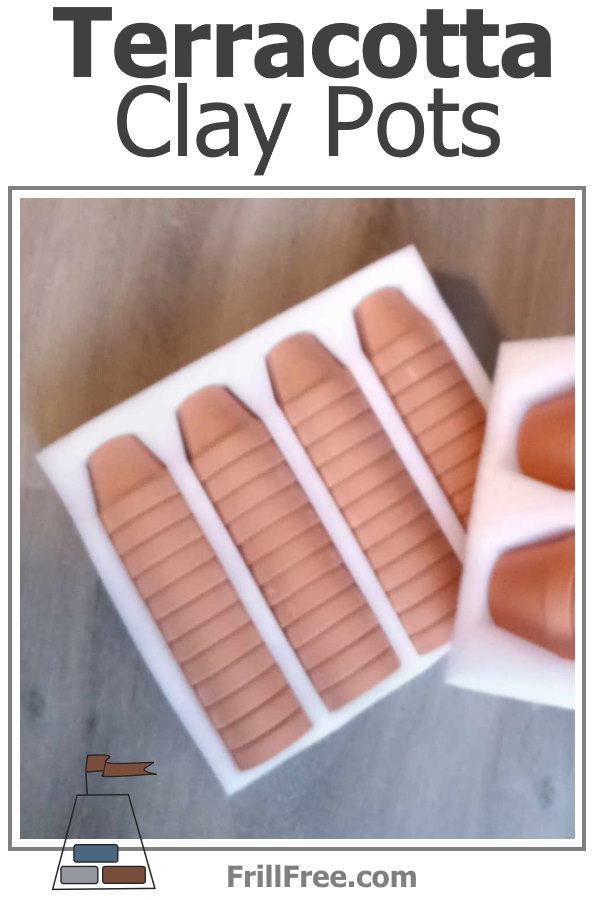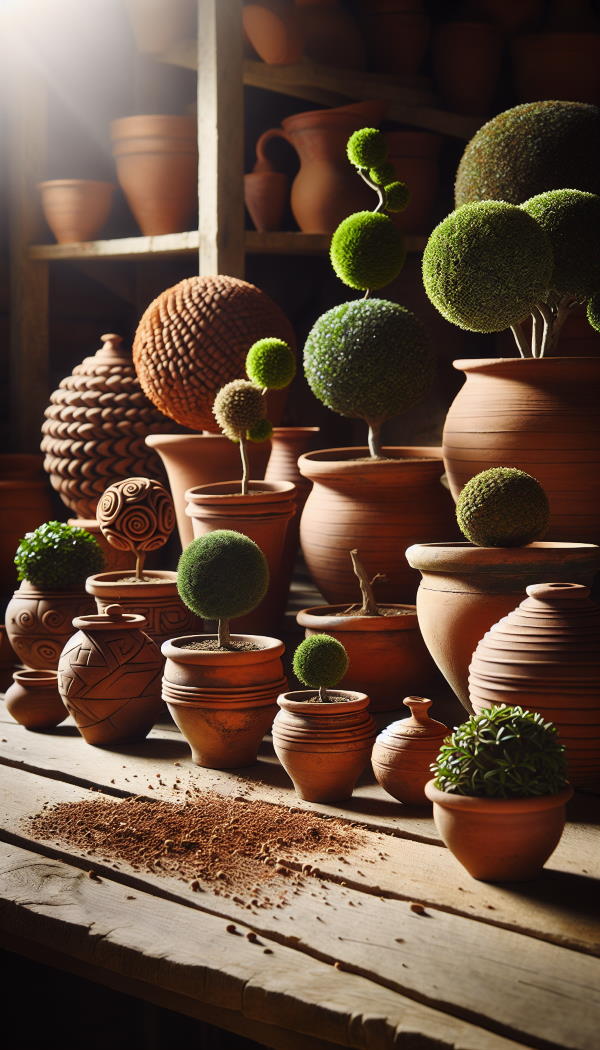- Homesteading
- Growing Ornamental Plants
- Terracotta Clay Pots
Terracotta Clay Pots
Why Do I Use Such Old Fashioned Pots?
I am a participant in the Amazon Services LLC Associates Program, an affiliate advertising program designed to provide a means for me to earn fees by linking to Amazon.com and affiliated sites. Other links on this site may lead to other affiliates that I'm associated with.
Terracotta clay pots were in fashion many years ago, due to the fact there wasn't much else available. In the years before plastics were invented and industrial methods developed, they were the best option for gardeners and growers.

Terracotta clay pots are a traditional type of pottery used in various cultures around the world. The name "terracotta" comes from the Italian word "terra cotta" which means "baked earth".
These pots are made by
shaping clay, either by hand or using a potter's wheel, and then
"firing" or baking them in a kiln. This heating process hardens the
clay, making it more resilient and resistant to the elements.They are not frost proof, so need protection in cold weather.
Terracotta pots are known for their natural brownish-orange color, or "rust" color, a result of the iron content in the clay reacting with oxygen. However, they can be painted or glazed into different colors for decorative purposes.
One of the main
characteristics of terracotta pots is their porosity. This means that
they allow water and air to pass through their walls, helping to keep
the roots of plants ventilated and drained, which can be beneficial for
certain types of plants. Succulents in particular benefit from this feature.
Imagine a charming garden scene with several terracotta clay pots neatly arranged. These pots are brimming with well-trimmed topiary plants, which are clipped to form various intricate shapes.
Perhaps one pot contains a spiral-shaped ivy, another a heart-shaped rosemary, and another a cubed-shaped boxwood.
The terracotta pots have a matching rugged texture, earthen tones with nuances of orange and brown. The topiary plants display diverse shades of green, catching the sunlight from the azure sky above.
The entire scene exudes tranquility, mirroring the idyllic and patient craft of gardening.

Terracotta pots can come in a variety of sizes and forms, from small pots suitable for one plant to large garden planters or urns. They are commonly used in gardening due to their durability and versatility, making them suitable for different kinds of plants and climate conditions.
In addition to their practical uses, terracotta pots can also be seen as decorative items thanks to their rustic and charming aesthetic. They can add a warm and organic touch to outdoor gardens, patios, or indoor spaces.
These pots have been produced for over a century, specifically for their many useful characteristics. Although they are a bit fragile and unlikely to withstand a drop from heights of over a few inches, they have so many other benefits that we have to overlook that.
They are available in many sizes, from an inch or two, all the way up to several feet across.
They are accordingly weighty, the bigger they are. Many people like the fact that they have some heft to them, as larger and taller plants tend to not tip over if they're in a heavier pot.
Where to Find Terracotta Pots
They can be found used on Facebook marketplace, if you're lucky and quick to respond.
They are used for crafts as well as for planting in, so they disappear from listings quickly. If you put your own ad up, In Search Of (ISO) you may have good success with finding some.
I like used ones, they have a lot of patina. You can soak them in a weak solution of compost tea to age them, or to remove salts that accumulate, use vinegar. Rinse well after these types of treatments before planting.
On Amazon and other online merchants we can be spoiled for choice. There are so many options of gorgeous terracotta clay pots!
Think about what plants you will be growing, and how much root space they'll need. Smaller pots may not be enough if you have vigorous and fast growing plants. They might be best seeded or struck as cuttings into a bigger, flatter container first, then transplanted as needed into separate pots.
For my system of growing plants I use the smallest size, usually advertised as useful for wedding favors, and plant into the teaspoon or so of soil that they hold.
Plants like Streptocarpus that are slow growing require tiny pots so they don't get water logged. After they gain a bit of size in these, they are easily moved up into a larger size.
When the plants are first planted in the pots, they are placed in a bussing tub, where they can be watered en masse, meaning all at once.
The porous nature of the clay used means that they have capillary action, and water is drawn up the sides and into the soil. No need to water from the top and disturb the newly potted plant!
They can be soaked in advance of planting to help the plant get established, but I find this isn't necessary as long as they are watered soon after planting.














